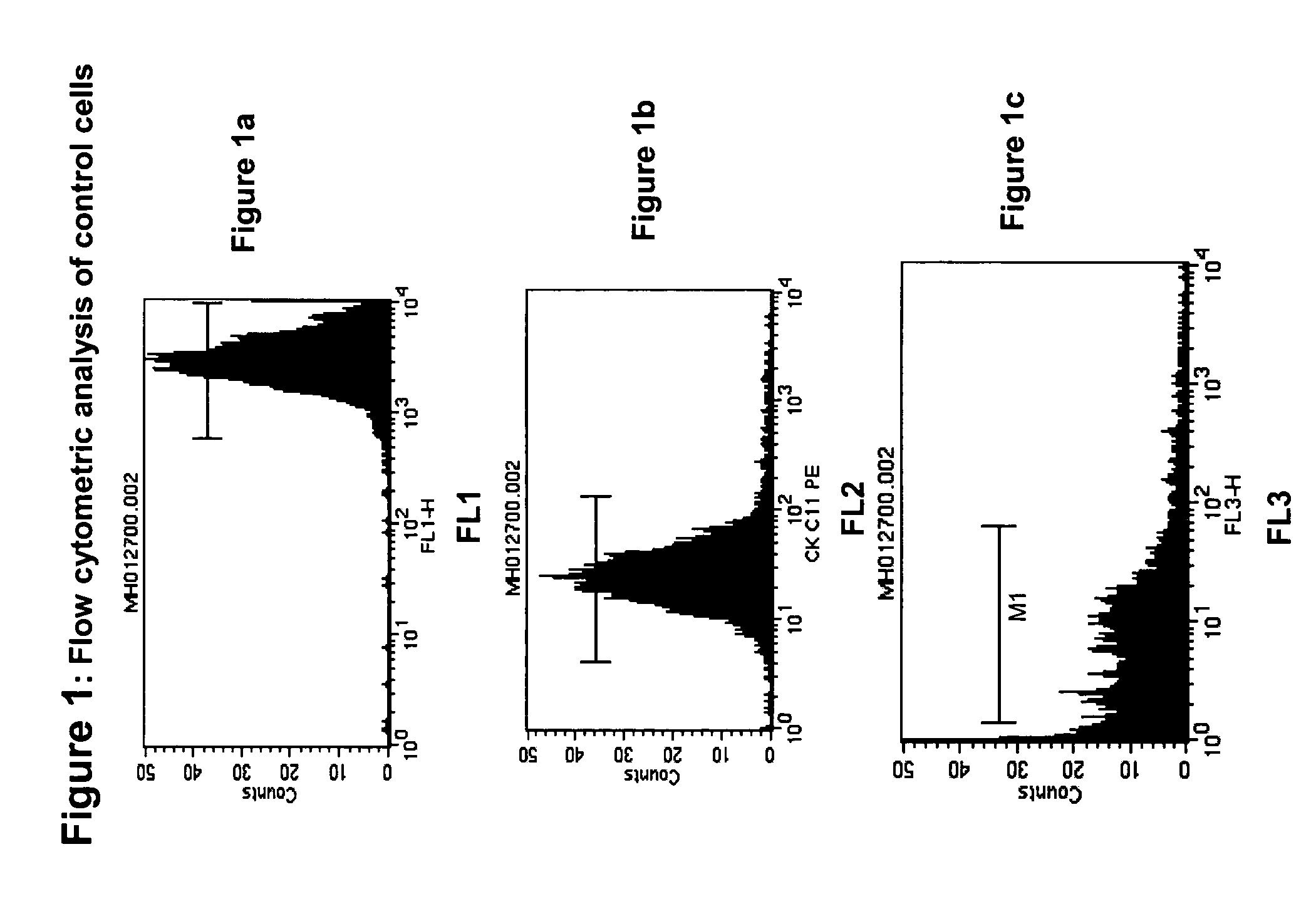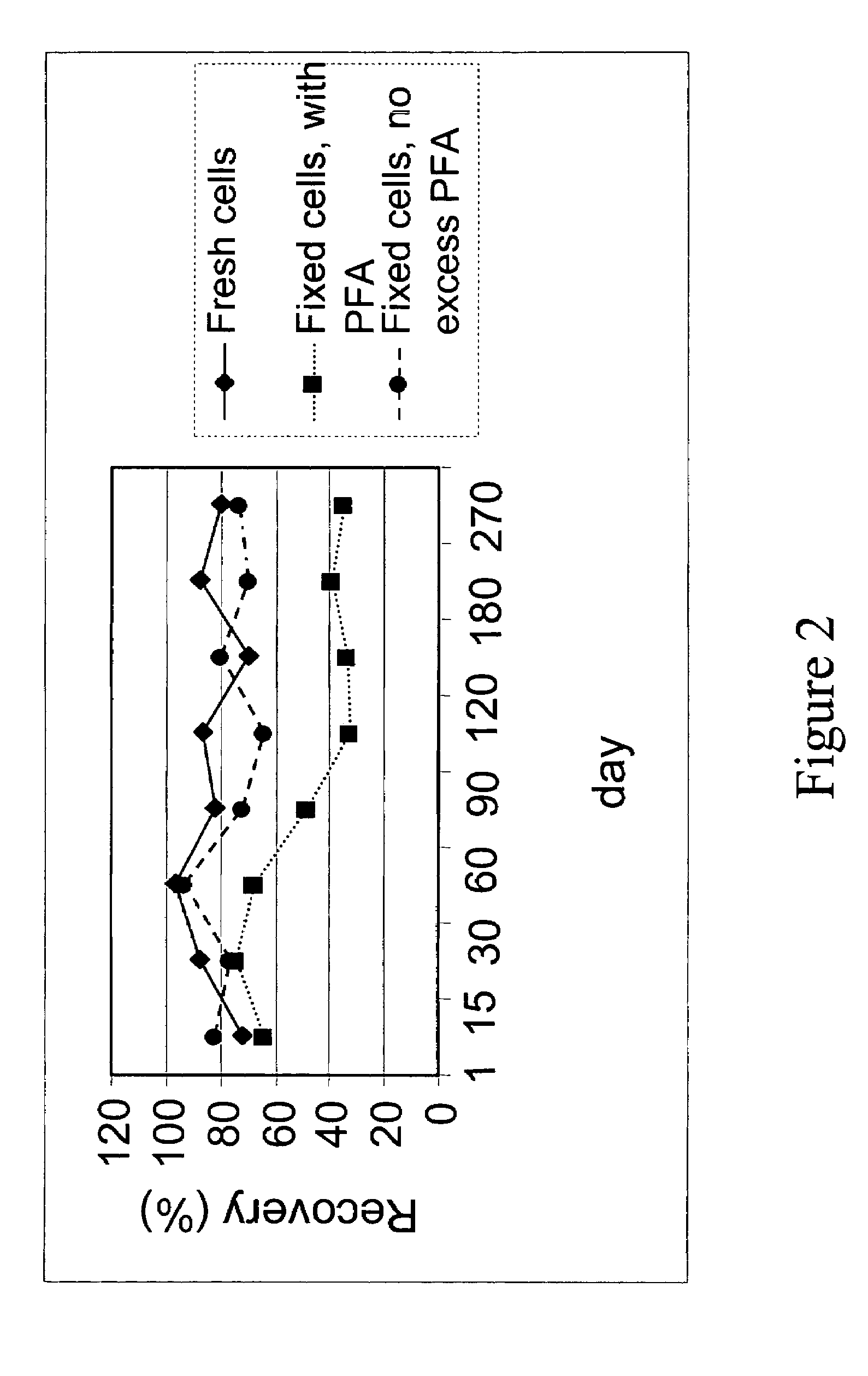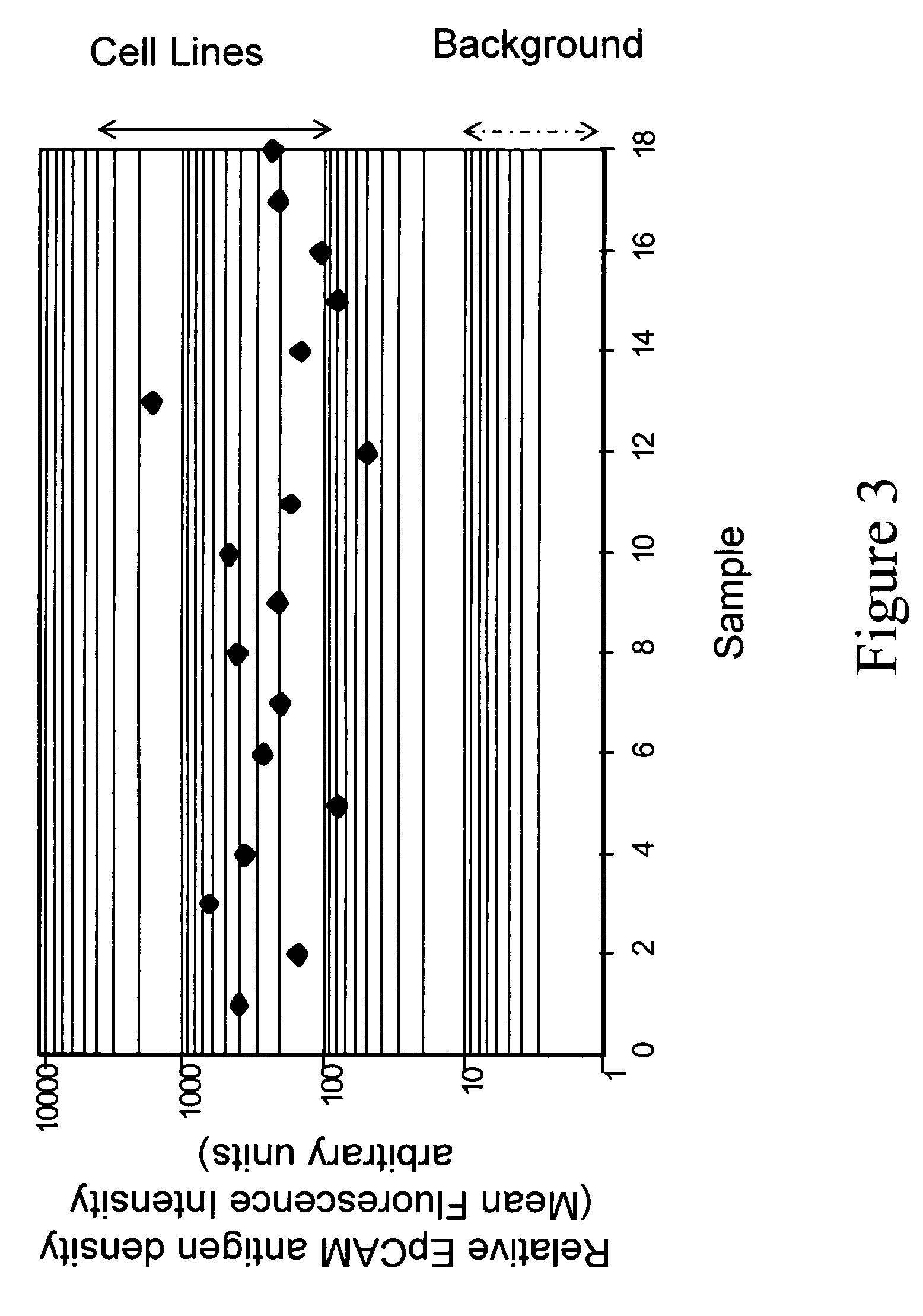Labeled cell sets for use as functional controls in rare cell detection assays
a technology of functional controls and labeled cell sets, which is applied in the field of labeled cell sets for use as functional controls in rare cell detection assays, can solve the problems of difficult detection and elimination of colonies, inability to treat all colonies successfully, and a bit of futility in efforts, so as to facilitate the practice of methods and increase the severity of the disease sta
- Summary
- Abstract
- Description
- Claims
- Application Information
AI Technical Summary
Benefits of technology
Problems solved by technology
Method used
Image
Examples
example 1
Preparation of Stabilized Pre-Labeled Control Cells
[0091]The positive control cells can be pre-labeled with diverse markers. One method entails labeling cells using a lipophilic, membrane-specific fluorescent dye. There are numerous types of membrane dyes known in the art which are available commercially. Carbocyanines are among the most strongly absorbing membrane dyes known. Membrane dyes label cells by binding to membrane lipids. It is important that this labeling does not prevent the antibody binding to specific epithelial antigens. The binding of the dye to cells should be essentially non-reversible, and no leakage should occur during storage and test procedures. Another approach is to label cells using a fluorescent-antibody conjugate specific for cell surface antigens. A further approach entails labeling cellular components with fluorescent dyes. Examples of this approach include, without limitation, DAPI and Hoechst 33342 for double stranded DNA, acridine orange for DNA and ...
example 2
Preparation of Pre-Labeled Control Cells Using an Antibody Conjugated to a Fluorescent Dye
[0098]In this example, the SKBR-3 cultured tumor cells described in Example 1 were again used. However, the cells were pre-labeled with a Her2neu antibody conjugated to a cyanine dye. Anti-Her2neu specifically binds a surface antigen present on certain tumor cells including SKBR-3. The Her2neu MAb was conjugated to a Cy2™ dye using a N-hydroxysuccinimide ester of Cy2™ dye (Amersham catalog # PA22000) and following the manufacturer's recommendations.
[0099]SKBR-3 cells, adhered to the flask, were released with trypsin and washed twice with PBS by centrifugation. The cells were resuspended in permeabilization solution and stained with Her2neu-Cy2® dye for labeling. Permeabilization reagent did not have any effect on staining of cells with antibody. The final concentration of antibody during staining was 2 μg / ml and the concentration of cells was 1×106 cells / ml. The staining and permeabilization we...
example 3
Stability of Pre-Labeled Control Cells
[0101]Fresh cells are generally stable for only one or two days. After this time, the antigens begin to shed and soon the cells disintegrated, causing cell number to decrease drastically. The pre-labeled control cells described in Examples 1 and 2 remained stablity for much longer periods. Two important criteria were used to follow stability: physical stability and biological stability. Physical stability is defined as the presence of an intact cell in a suspension. Biological stability is defined as the preservation of antigens present on cell surfaces and inside cells. Both physical and biological stability are important indicators of functional stability of control cells.
[0102]The physical stability of control cells was observed as a function of time by determining the number of cells present in suspension using flow cytometry for cell size, presence of a nucleus, and integrity of antigens. Two antigens were checked for integrity, which are i...
PUM
 Login to View More
Login to View More Abstract
Description
Claims
Application Information
 Login to View More
Login to View More - R&D
- Intellectual Property
- Life Sciences
- Materials
- Tech Scout
- Unparalleled Data Quality
- Higher Quality Content
- 60% Fewer Hallucinations
Browse by: Latest US Patents, China's latest patents, Technical Efficacy Thesaurus, Application Domain, Technology Topic, Popular Technical Reports.
© 2025 PatSnap. All rights reserved.Legal|Privacy policy|Modern Slavery Act Transparency Statement|Sitemap|About US| Contact US: help@patsnap.com



